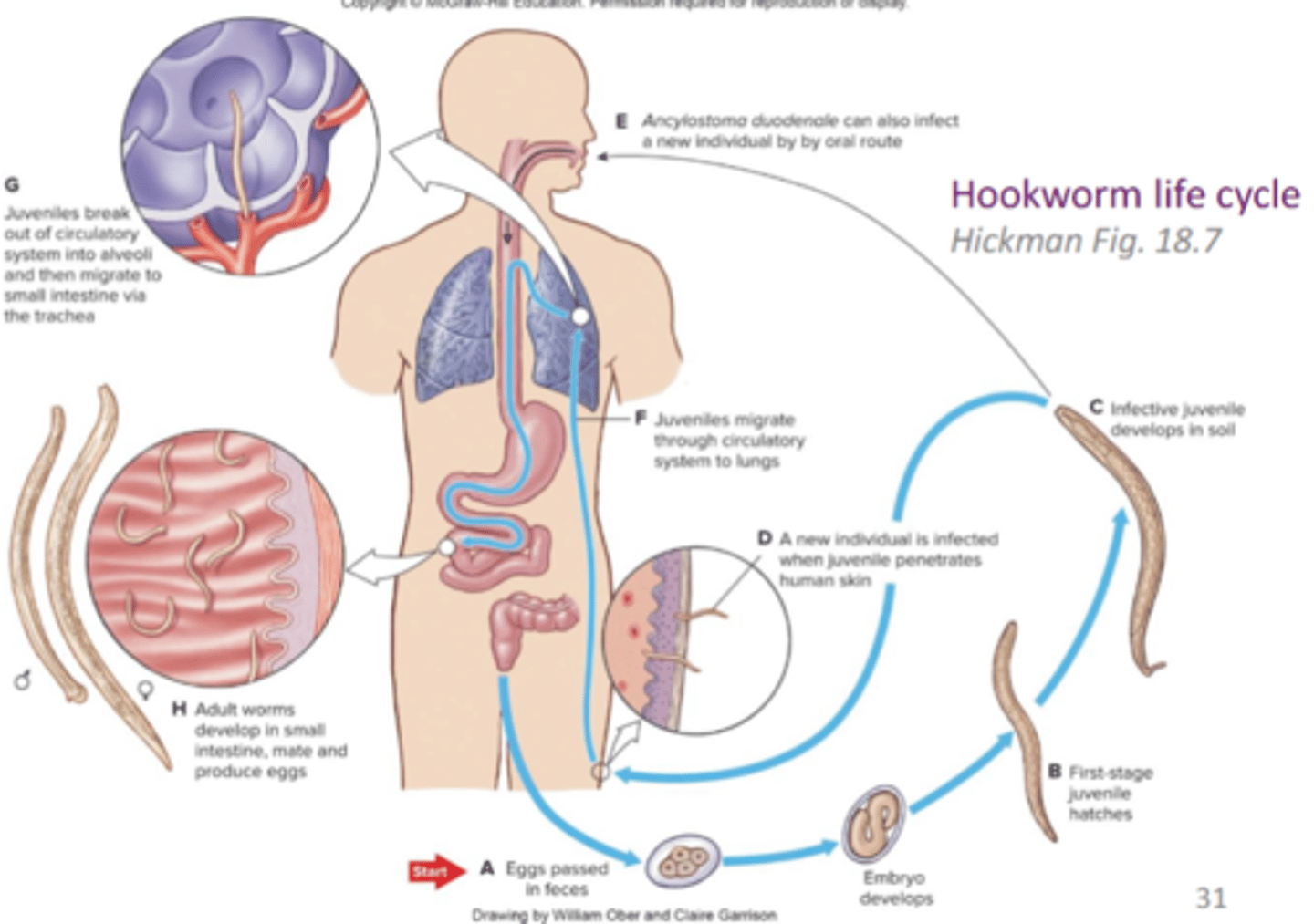Zool 110 Lec: Platyhelminthes, Nemertea, and Nematoda (lec 22)
1/38
There's no tags or description
Looks like no tags are added yet.
Name | Mastery | Learn | Test | Matching | Spaced |
|---|
No study sessions yet.
39 Terms
bilateral, cephalization
the three introduced phyla are the origins of _____ symmetry, and ______
cephalization
has a head
acoelomate
are platyhelminthes acoelomate, coelomate, or pseudocoelomate

Group Lophotrochozoa and Clade Platyzoa
what group and clade are platyhelminthes in
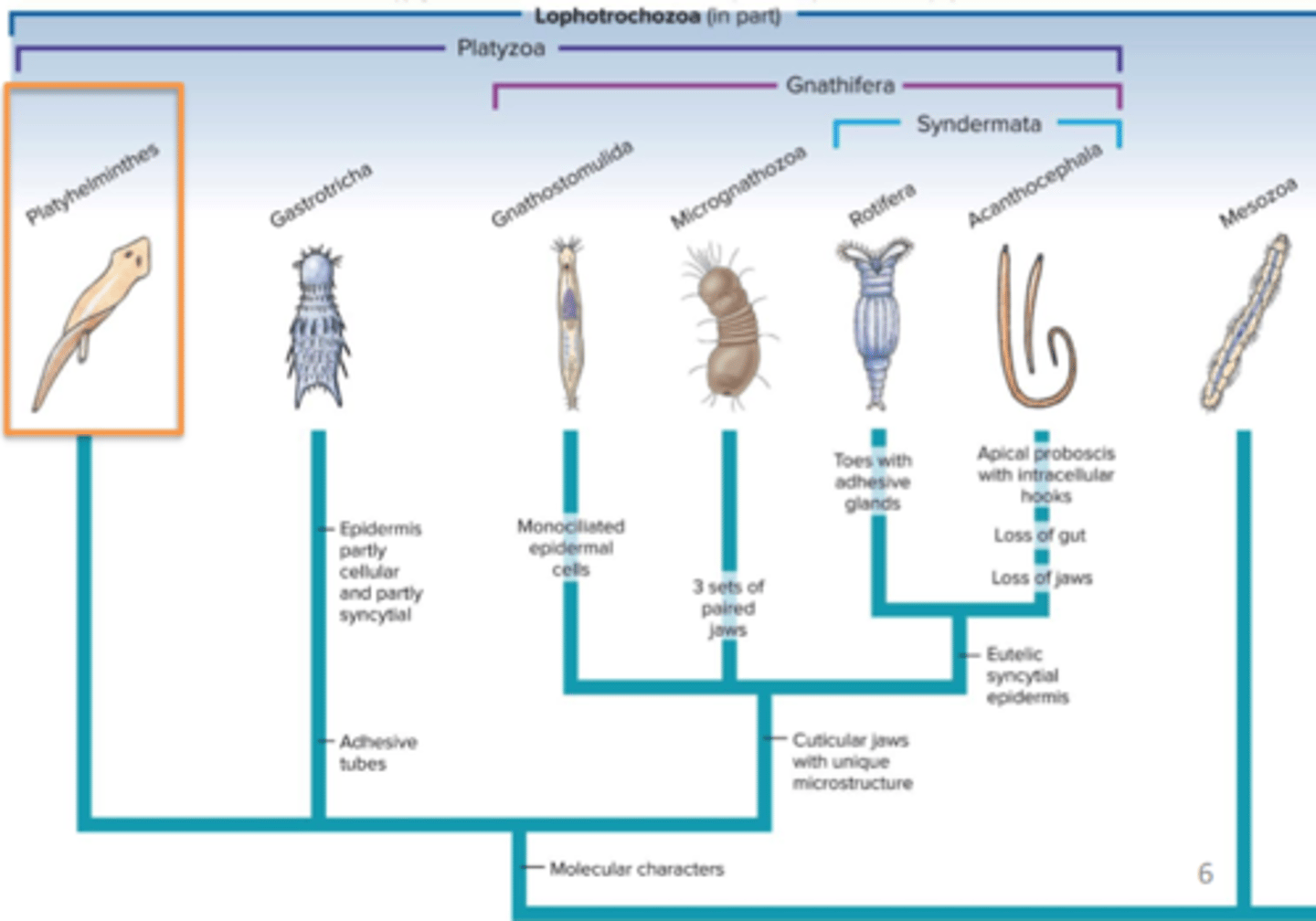
Platyhelminthes
the group lophotrochozoans all have a lophophore or a trochophore, except ______
lophophore
a horseshoe shaped feeding appendage
trochophore
a free-swimming, ciliated larva of many worms and some mollusks
Phylum Platyhelminthes (flatworms)
no clear defining features (no synapomorphies), marine, freshwater, moist terrestrial habitats, bilaterally symmetric, triploblastic, acoelomate, incomplete branched gut

Turbellaria
all classes of platyhelminthes are parasitic, except the class _____
paired anterior ganglia and longitudinal nerve cords
the nervous system of platyhelminthes are made up of _____ and _____
statocysts and ocelli
the sense organs of platyhelminthes are made up of _____ and _____
fragmentation, complex parasitic life cycles, most forms are monecious, internal fertilization
characteristics of platyhelminthes reproduction
flame cells (protonephridia)
the excretory system of platyhelminthes is made up of
Turbellaria, Trematoda, Monogenea, Cestoda
what are the four classes of phylum platyhelminthes
Class Turbellaria
paraphyletic group, free-living, 4500 species, marine, freshwater, terrestrial, triclad vs polyclad gut

triclad gut
three-branched gut
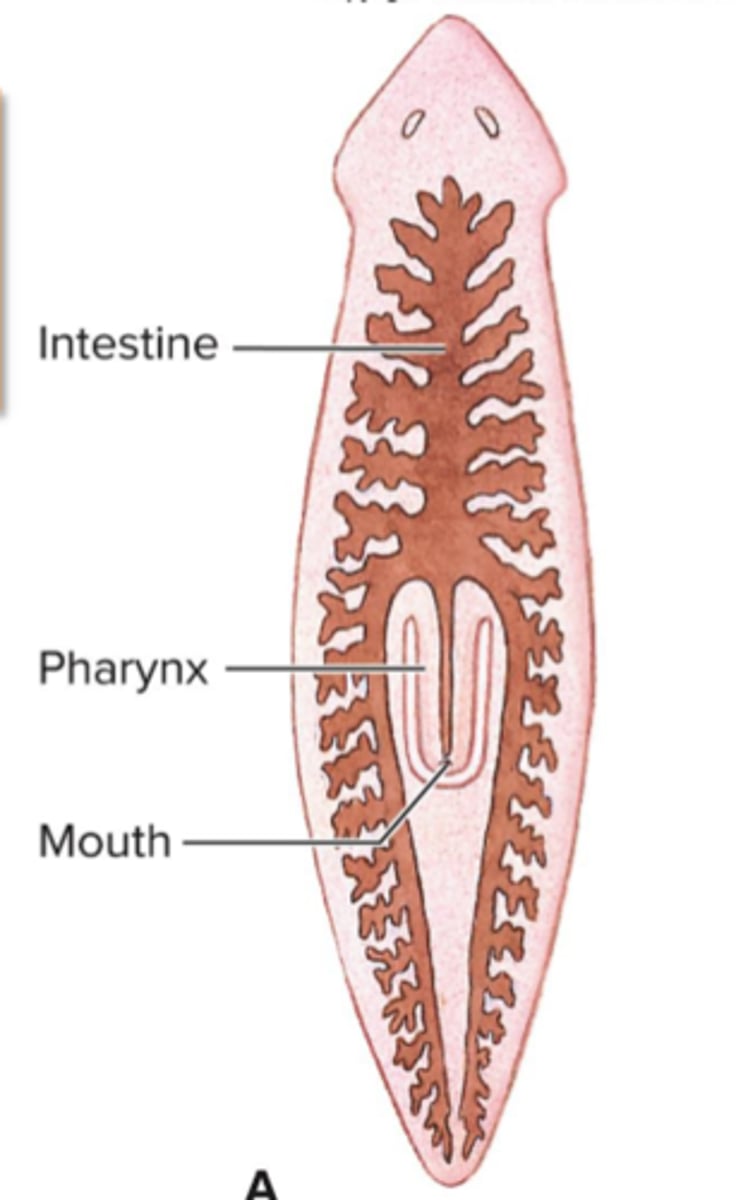
polyclad
gut with many branches
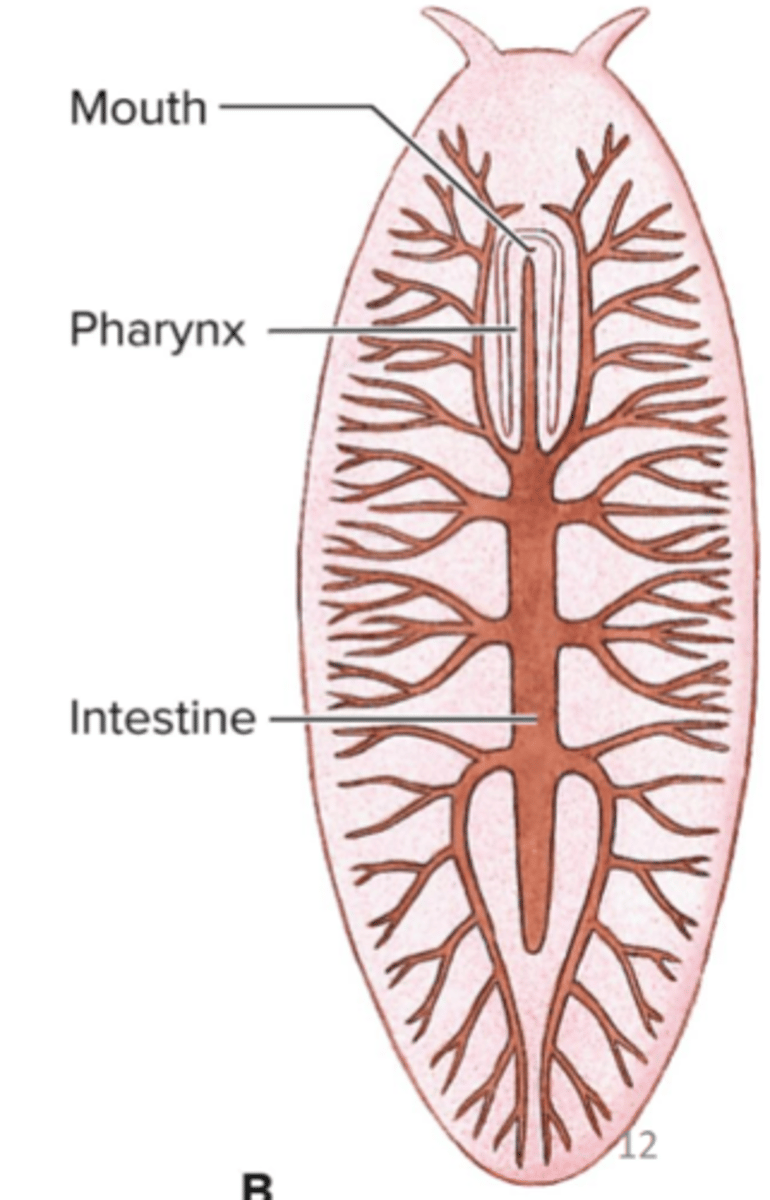
planarians
freshwater turbellarians
rhabdites, muscles
class turbellaria has a ciliated epidermis with _____, body wall _____ and muscles around the pharynx

Class Trematoda
digenetic flukes, parasitic (generally of vertebrates), structurally similar to turbellarians with modifications for parasitism such as oral suckers
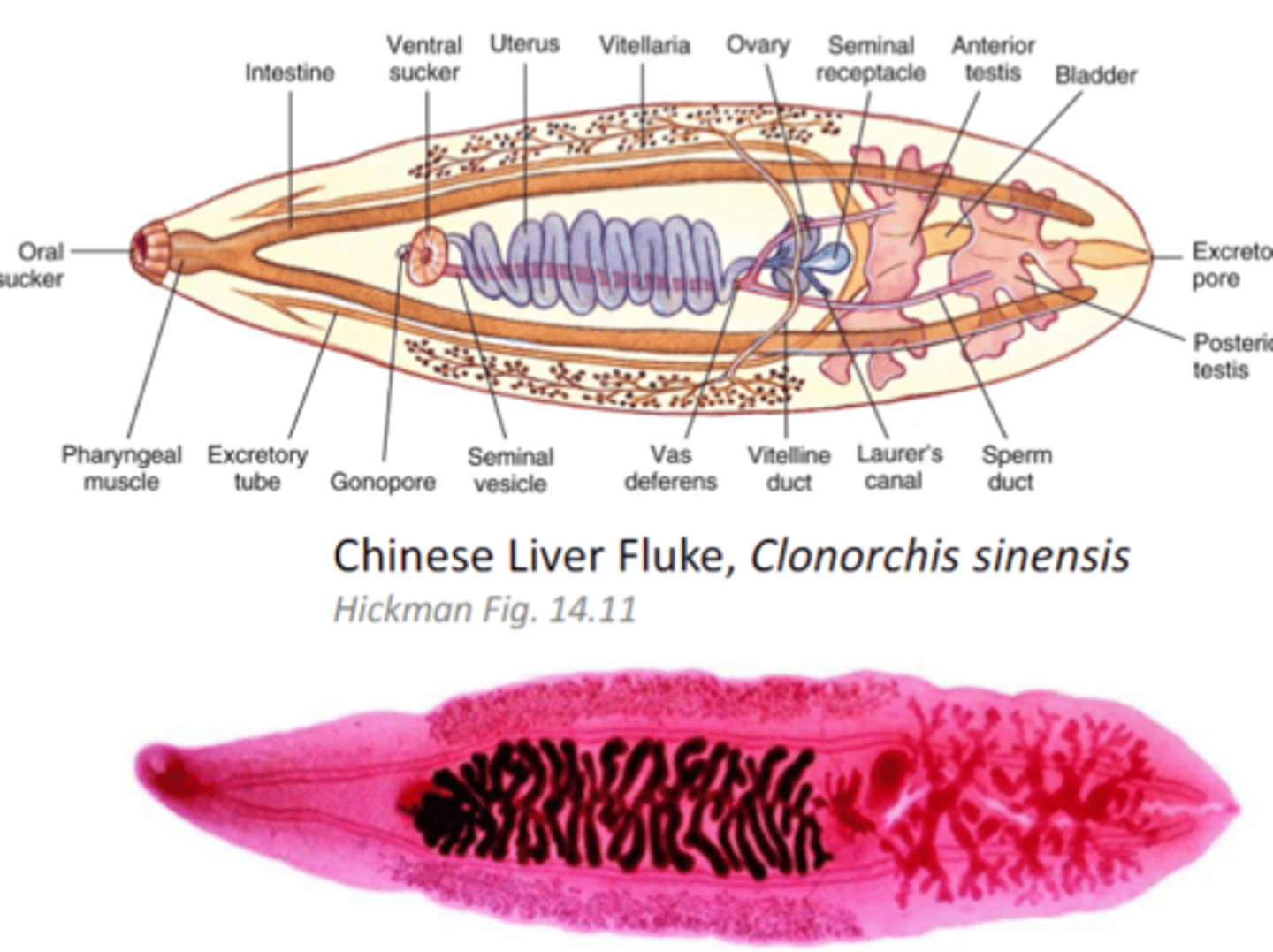
Class Trematoda Life Cycle (e.g. Clonorchis sinensis)
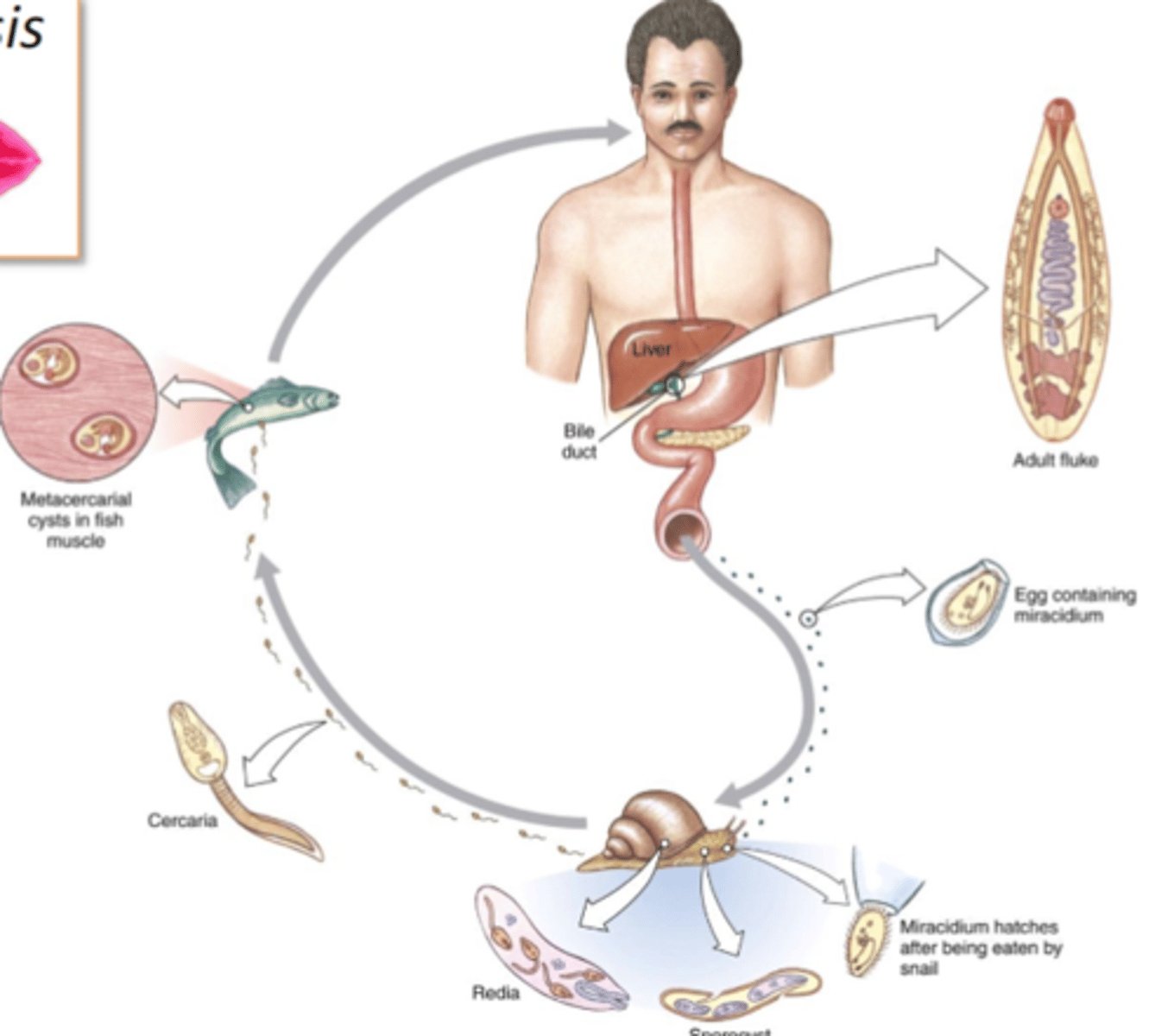
Class Trematoda Life Cycle (e.g. Schistocoma mansoni)
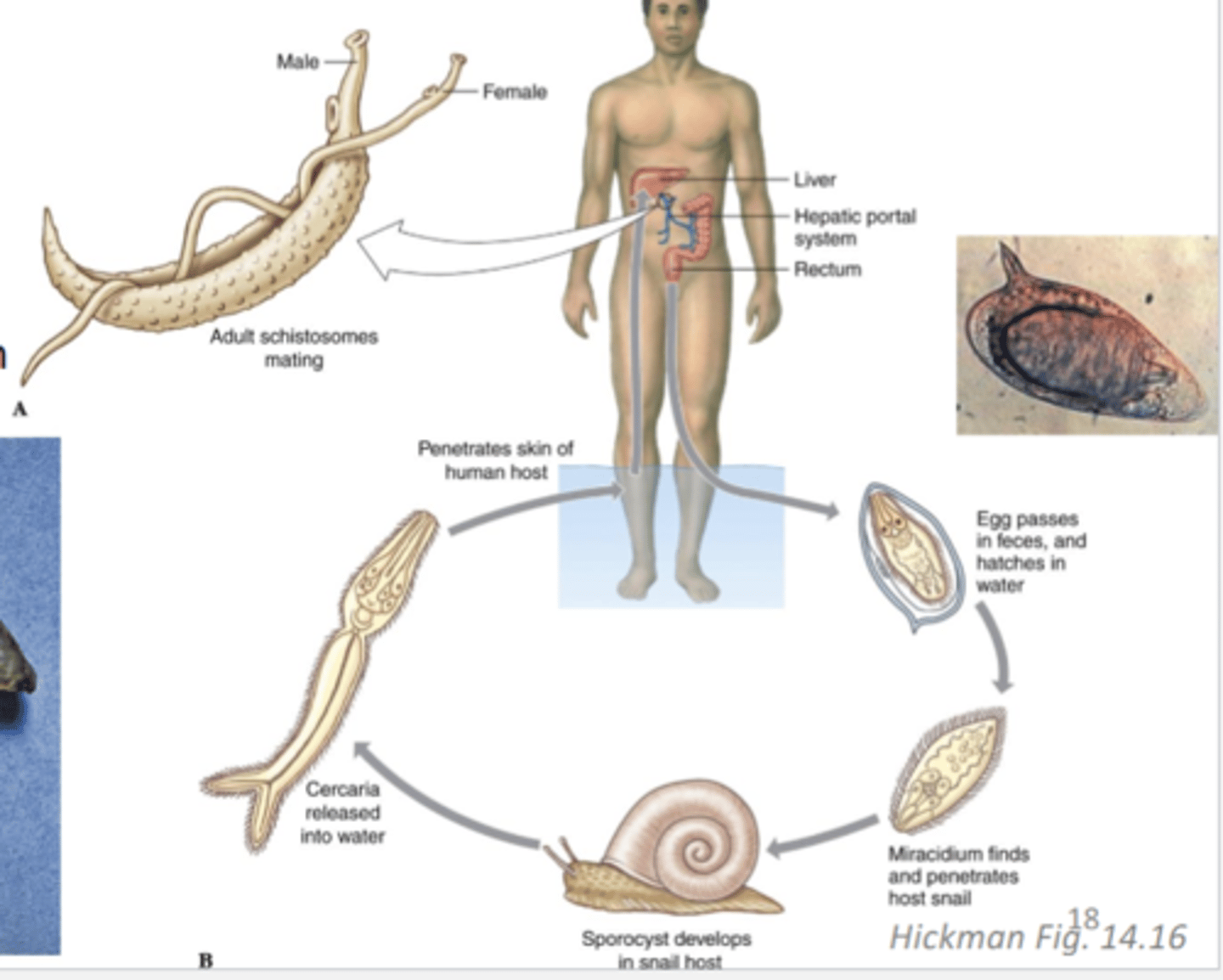
Class Monogea
monogenetic flukes, parasitic (typically ecoparasites of fish gills)

Class Monogea Life Cycle
single host, egg --> larva --> adult parasite
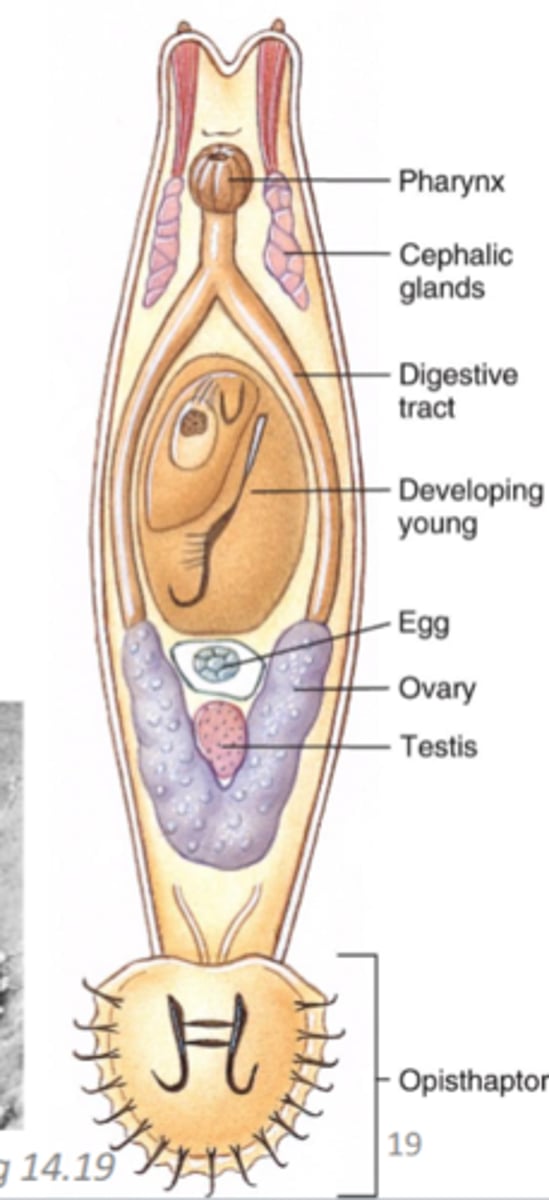
opisthapter
large, posterior attachment organ

Class Cestoda
parasitic in gut of vertebrates, no gut, absorbs nutrients through skin, longitudinal nerve cords
Class Cestoda body plan
repeating segments (proglottids) + posterior scolex to attach to the host, each proglottid contains both male and female organs
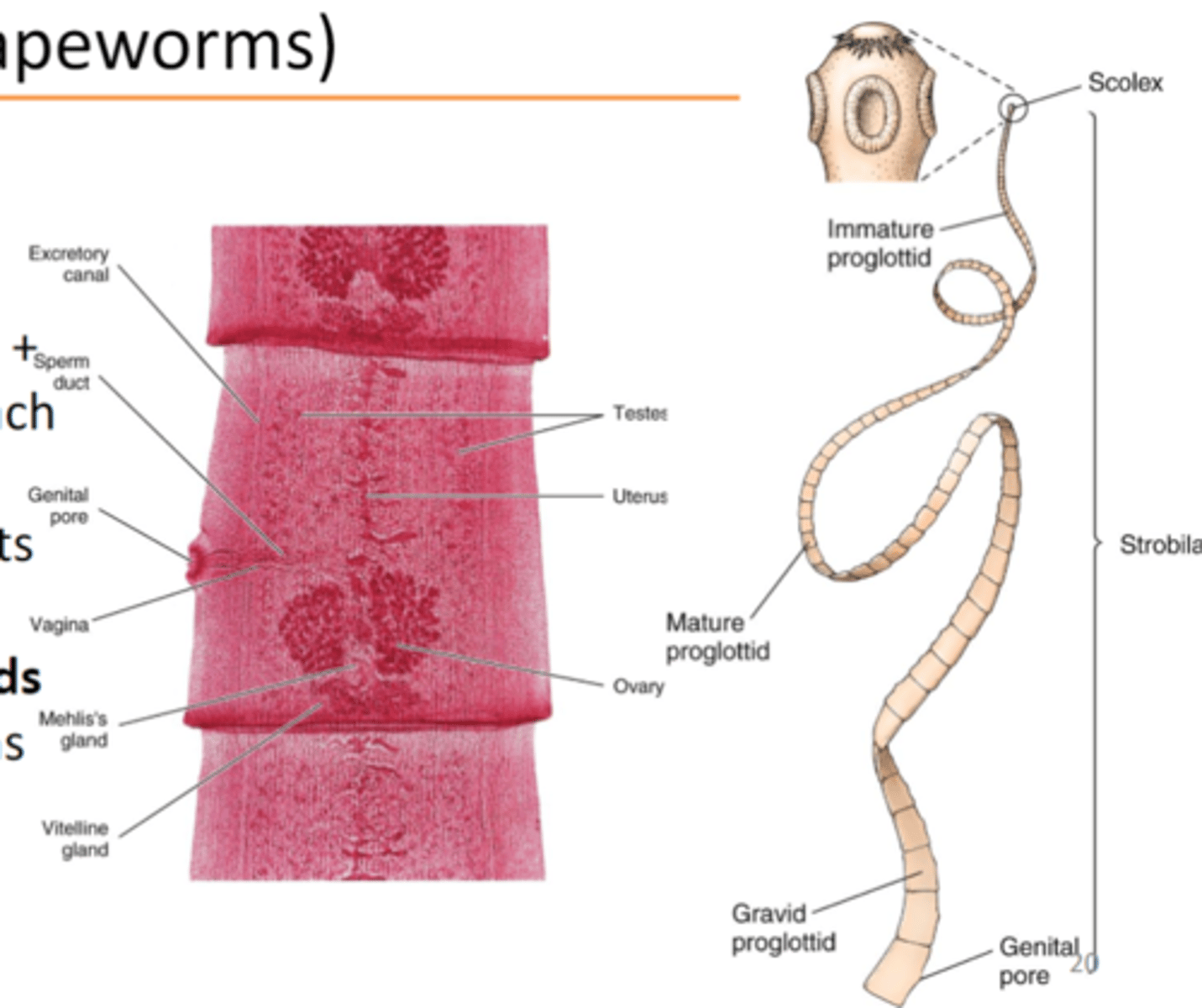
Class Cestoda Life Cycle (e.g. Taenia saginata)
adult (human) --> shelled larva (grass) --> cysticercus juvenile (cow)

eucoelomate
is phylum Nemerteans eucoelomate or pseudocoelomate
Phylum Nemertea
ribbon worms, distinguished by long evertible proboscis, 1000 species, most marine some terrestrial, most < 20 cm long

Phylum Nemertea body plan
triploblastic, true coelomic cavity (rhynchocoel) may not be homologous with coelom of other protostomes, complete digestive tract, outer circular and inner longitudinal muscles, 4 lobed brain connected to paired longitudinal nerve trunks, excretory system with flame cells
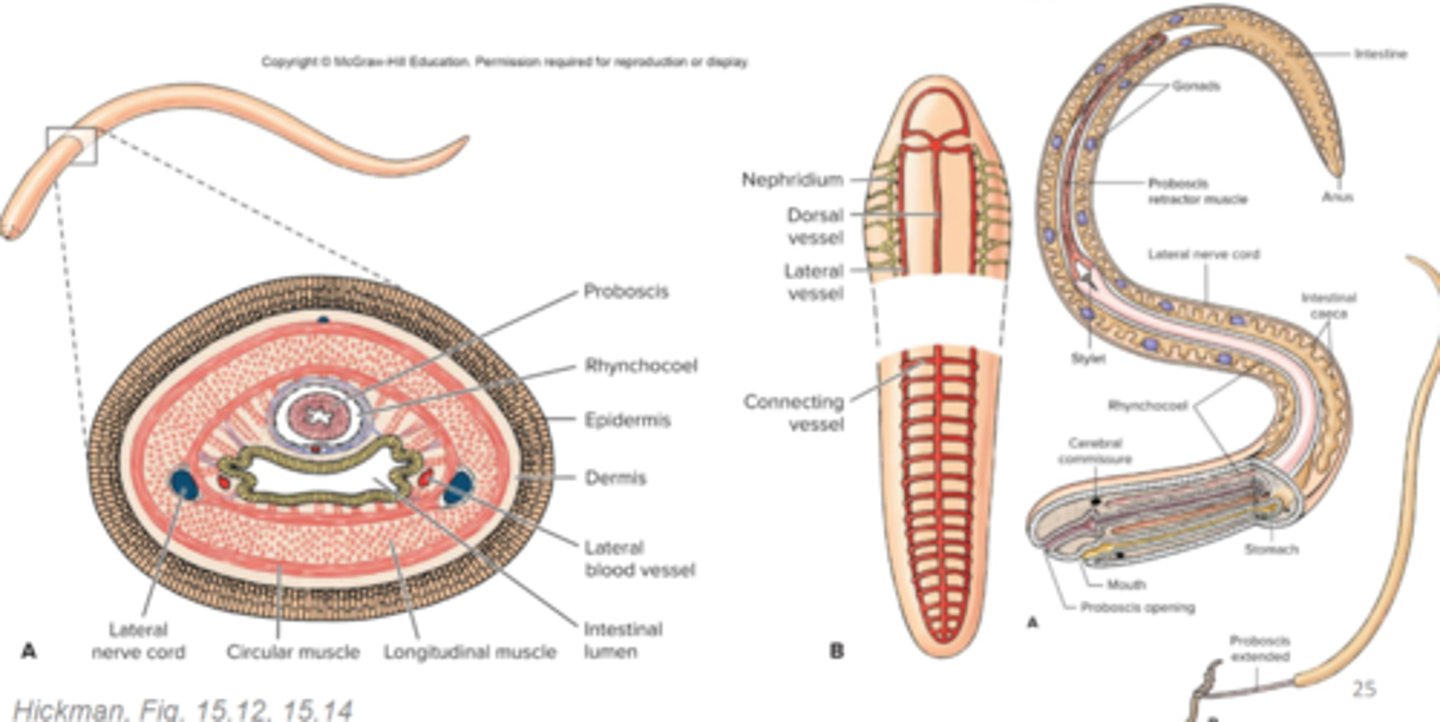
Lineus Longissimus
longest animal in the world, 60 m long and only 5-10 mm wide
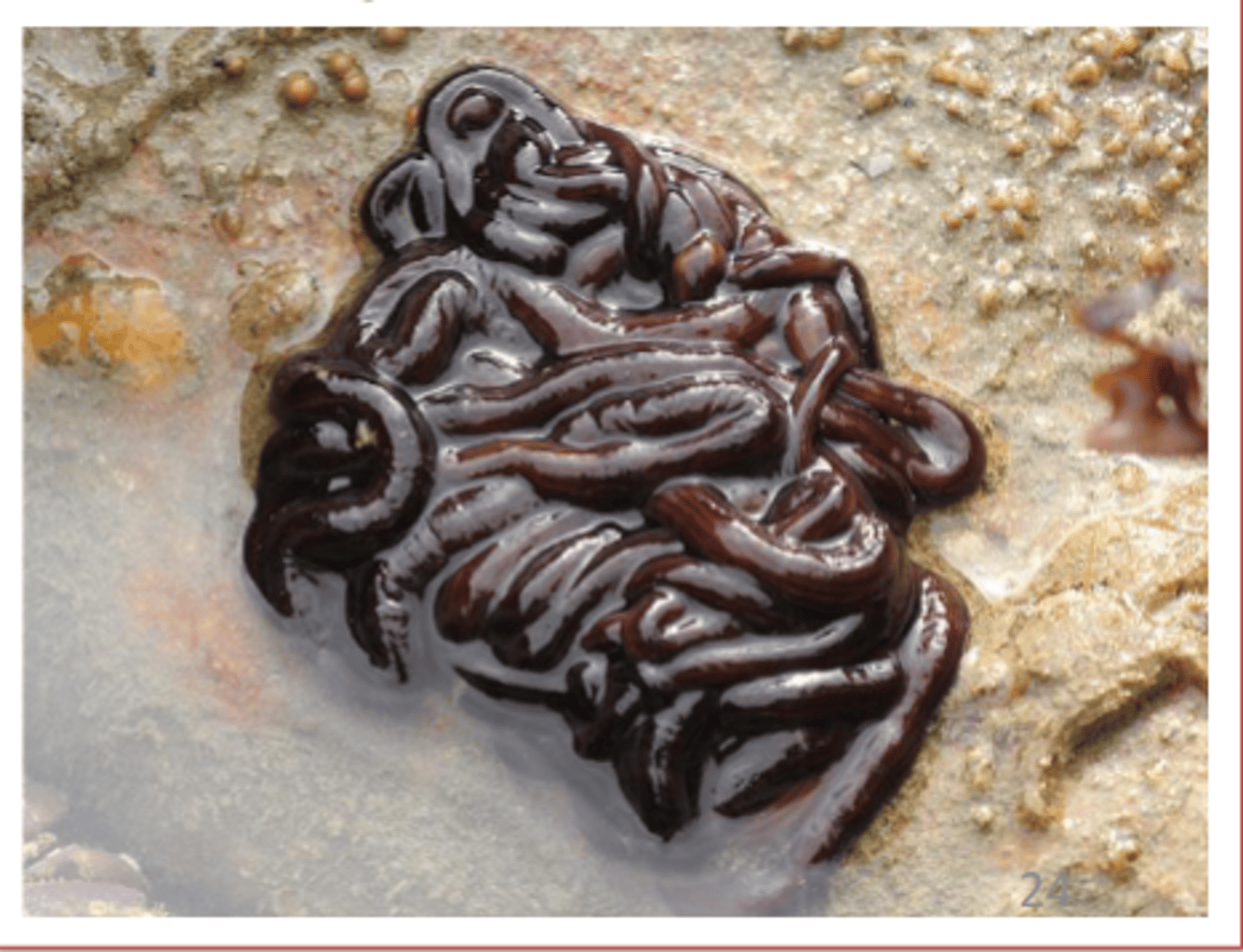
clade ecdysozoa
protostomes with a cuticle that is shed (molted) through ecdysis
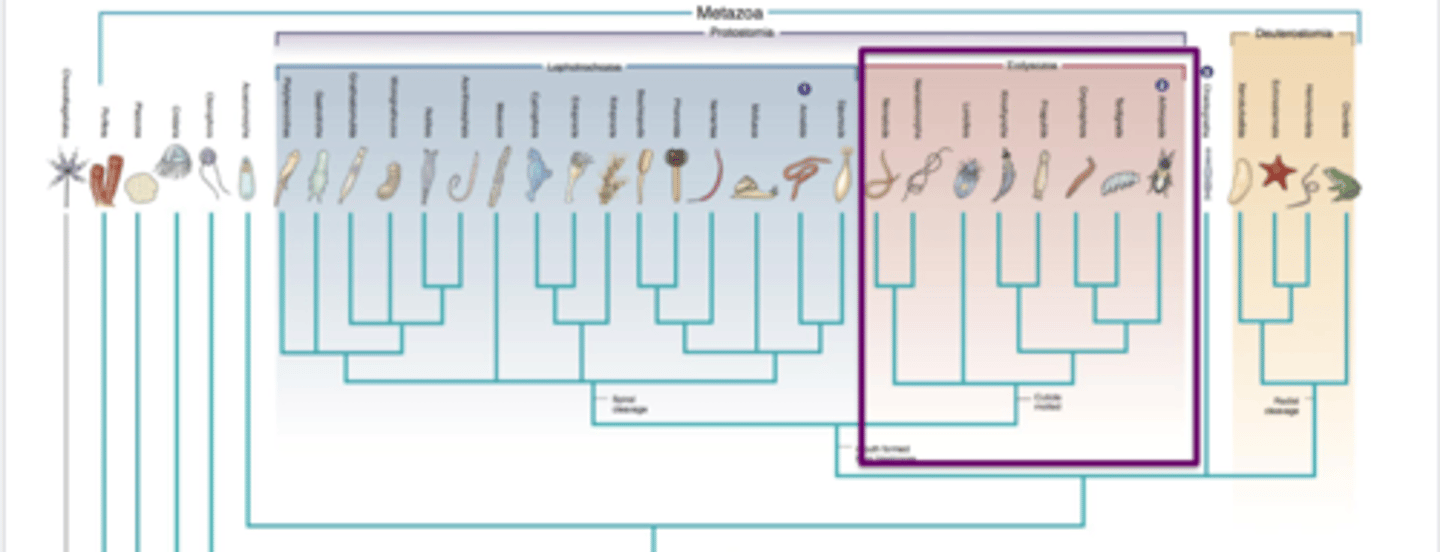
nematoda
which phylum is the most numerous on earth
Phylum Nematoda (roundworms)
25,000 species known, probably another 475,000 yet to be described, marine, freshwater, and soil, only have longitudinal body wall muscles, pseudocoelomate
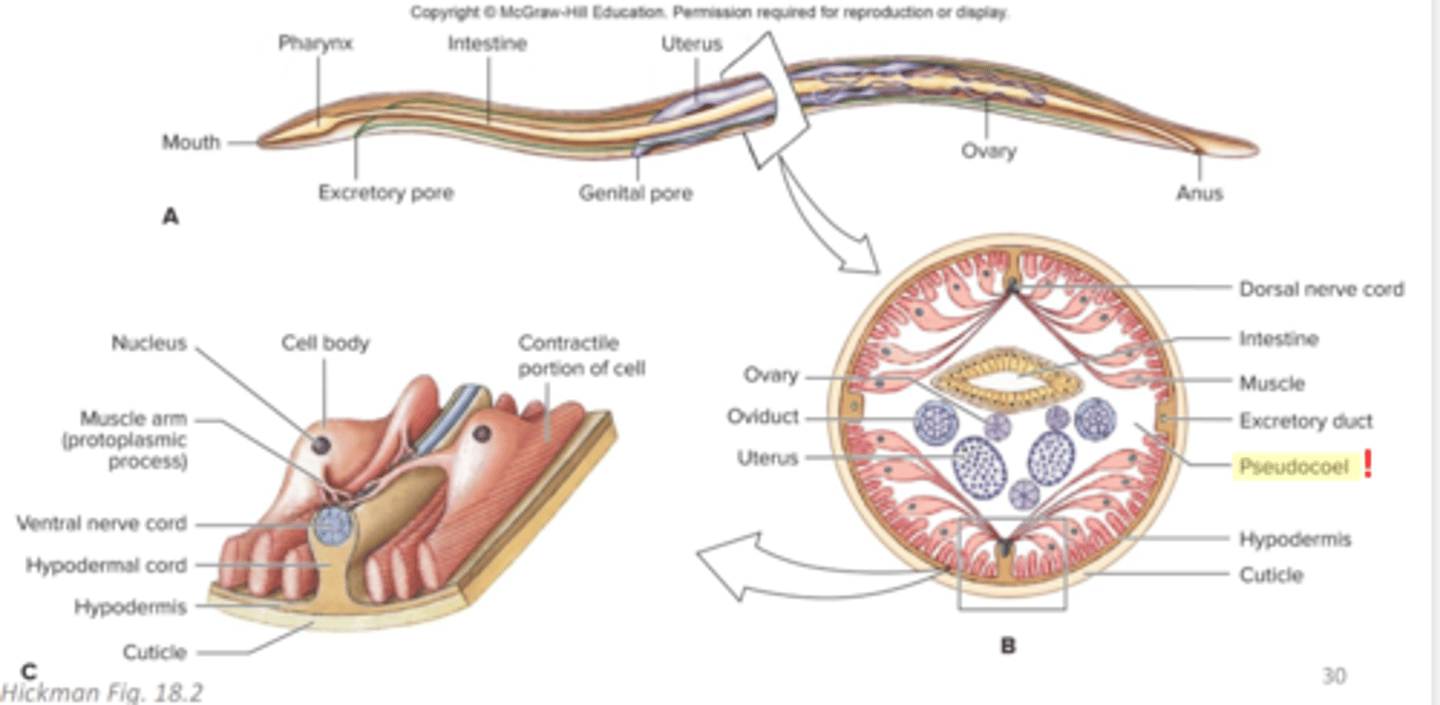
phylum nematoda
which phylum parasitizes nearly every type of animal on Earth, including crops, domestic animals, and humans
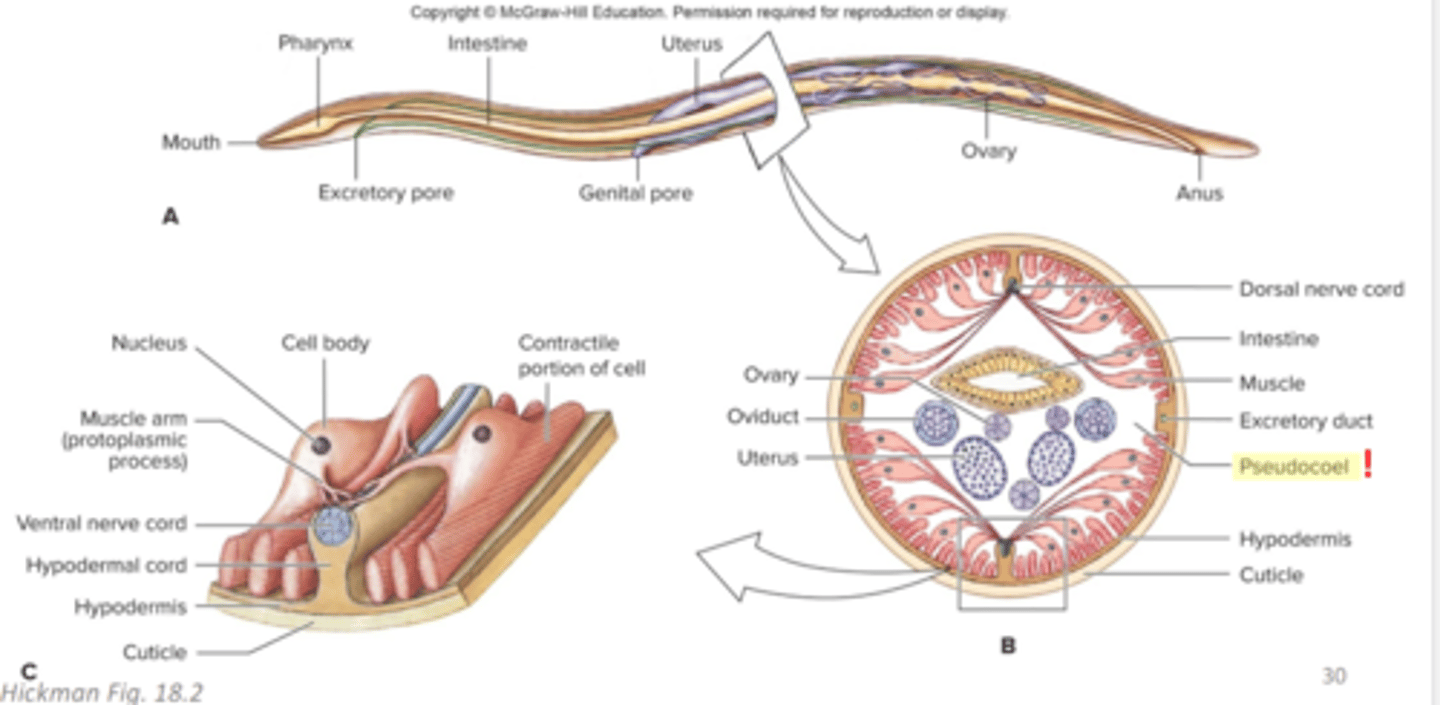
bacteria, yeasts, fungal hyphae, algae, rotifers, tardigrades, small annelids, or other nematodes
the free-living taxa of phylum nematoda eat _____....
Caenorhabditis elegans
important model organism (nematode) for genetic research
Phylum Nematoda Life Cycle
